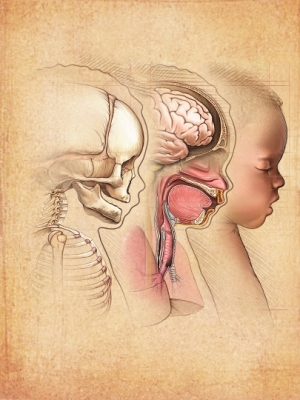
Although scurvy is more a deficiency disease than one of the haemopoietic system, it has two points of resemblance: marked capillary bleeding and progressive anemia. Scurvy is due to a prolonged deficiency of vitamin C in the diet and takes about 4 to 8 months to develop clinical signs. Habitation in an unhealthy surrounding predisposes.
Vitamin C is required for the activity of prolyl hydroxylase, which is responsible for the extensive hydroxylation of prolines in collagens. Deficiencies in proline hydroxylation interfere with the assembly of the procollagen triple-helix, resulting in degradation of the collagen. an understanding of the cause and remedy for scurvy grew out of the experience of British sailors in the 18th century. It occupies an interesting place in the history of the world when English sailors became progressively ill after long voyages at sea. It was only with the observation that the consumption of fruit helped to ward off the devastating effects of scurvy did the sailors begin to transport limes with them.
Scurvy has been known since ancient times, but the discovery of the link between the dietary deficiency of ascorbic acid and scurvy has dramatically reduced its incidence over the past half-century. Sporadic reports of scurvy still occur, primarily in elderly, isolated individuals with alcoholism. the incidence of scurvy in the pediatric population is very uncommon, and it is usually seen in children with severely restricted diets attributable to psychiatric or developmental problems. the condition is characterized by perifollicular petechiae and bruising, gingival inflammation and bleeding, and, in children, bone disease.
Scurvy was in some ways a more serious, certainly a more widespread problem. Relatively few men actually died of scurvy except on very long ocean passages, but it effectively limited the time a squadron could stay at sea, and thus directly affected the efficiency of the Service. No strategy of blockade, or any other which depended on keeping squadrons at sea for long periods, was possible in the face of endemic scurvy. the difficulty was to find a cure.
Causes of Scurvy:
Fortunately, there was a general understanding among sea officers that scurvy was a dietary disease, caused either by the presence of something harmful in the sailor’s diet, or by the absence of something essential, and in either case curable by fresh victuals.
Scurvy is due to a prolonged deficiency of vitamin C in the diet and takes about 4 to 8 months to develop clinical signs.
Habitation in an unhealthy surrounding predisposes.
Symptoms of Scurvy:
The chief deficiency sign is an inability of producing and maintaining the intercellular ground substance as collagen of all fibrous tissues: the matrix of bones, cartilages and dentine and all non-epithelial cement substances especially of vascular endothelium. as a result there is an increased permeability of the capillaries to the red blood corpuscles causing hemorrhages, new bone formation stops but as bone absorption still goes on, the bones become friable at the growing ends, interference with timely collagen formation causes delay in healing of wounds.
Find powerful herbal remedies
Stops Gum Bleeding
Some other important symptoms of scurvy are gradual weakening, pale skin, sunken eyes, tender gums, muscle pain, loss of teeth, internal bleeding, and the opening of wounds such as sword cuts that had healed many years before.
Exhaustion, fainting, diarrhea, and lung and kidney trouble followed.
There is massive periosteal reaction with increase in the distance between tibia and fibula.
This deficiency disease usually shows epidermal pallor in the upper part of the epidermis.
Psoraisiform hyperplasia with pallor of the lower half of the epidermis.
Numerous extravasated rbcs with lymphocytic infiltrate in the upper dermis are also present.